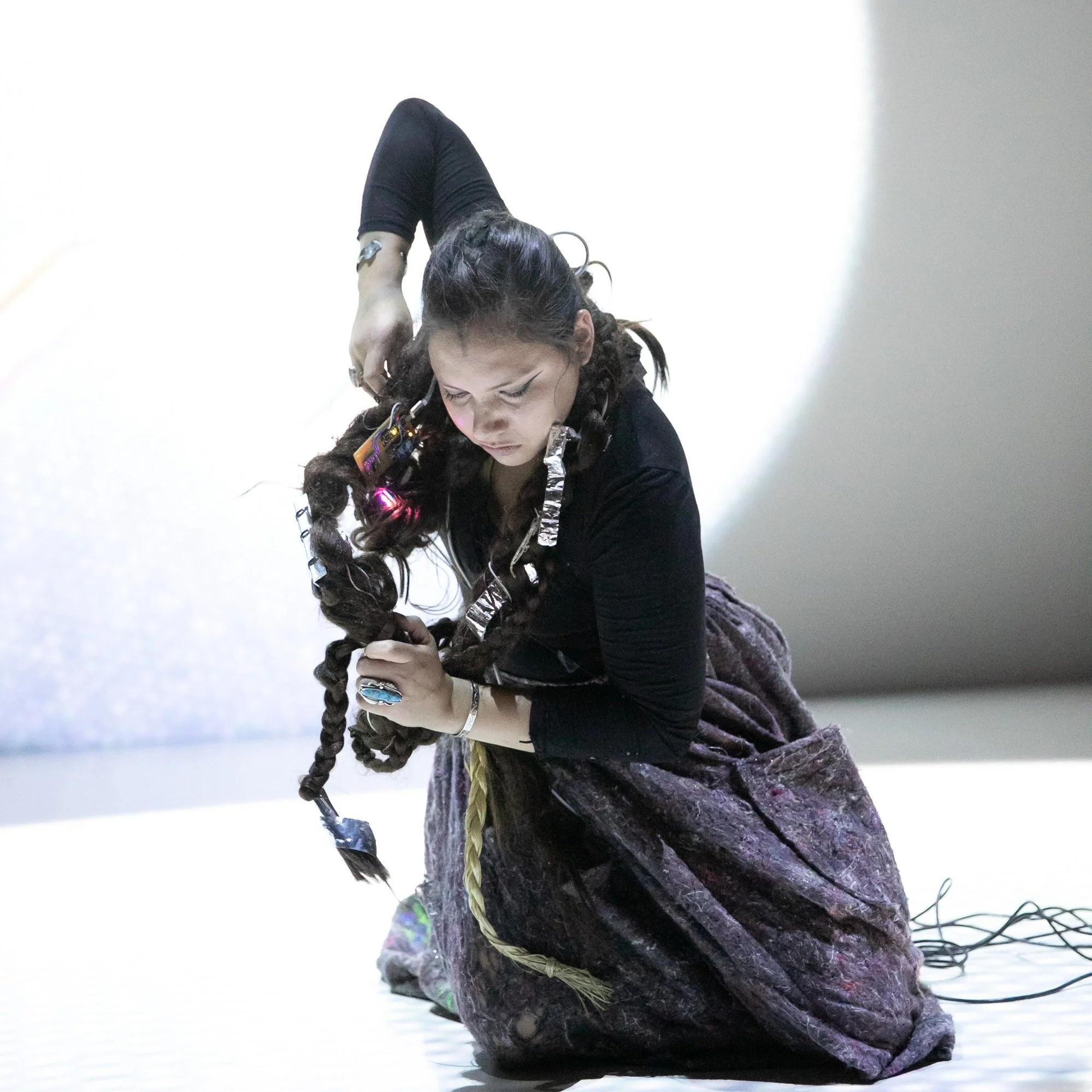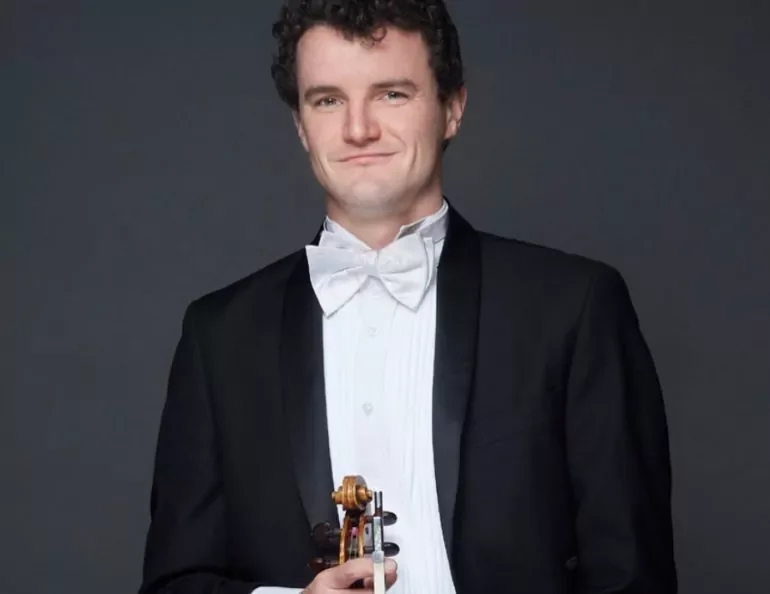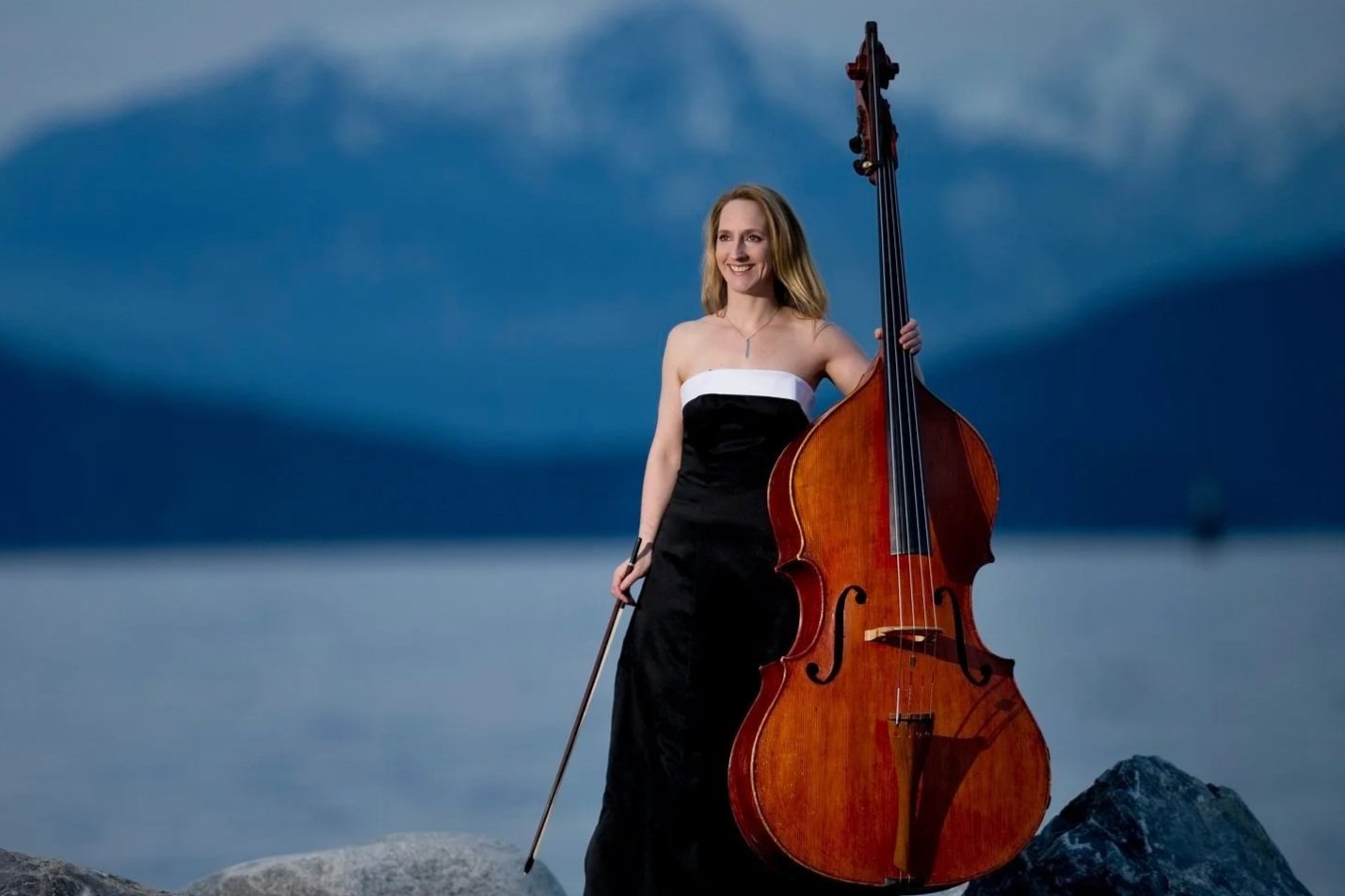Music review: Vancouver New Music's Electric Fields festival pushes sound and motion technology
Toggle switches, low-fi pickups, and glowing wireless controllers: a mixed bag of digital experiments
Aiyun Huang
Suzanne Kite
A Vancouver New Music presents Electric Fields online through November 10
ALTHOUGH IT’S NOW edging up towards 50, it’s good to see that Vancouver New Music has not lost its ability to surprise, confound, inspire, and even irritate—and its Electric Fields online festival manages to do all of these over the course of five more-or-less half-hour installments, which you can screen for free or by donation.
The thesis behind this diversion into home entertainment is a loose study of “gestural sonic expansions”, which here take many forms. Most of these have to do with the use of motion-sensing technology—borrowed, one suspects, from gaming, virtual reality, and animation—to control sound.
The concept itself doesn’t seem all that new: think of the Theremin, the first musical instrument to liberate sound from touch, or, closer to home and in time, Vancouver composer Peter Hannan’s 1990’s experiments with Don Buchla’s Lightning, a MIDI controller activated by electronic wands. But the technology is advancing rapidly and so, too, are the ways musicians have found to use it.
Although the five episodes of Electric Fields are not arranged in any explicit narrative arc, I’d highly suggest beginning with Japanese-American violinist and composer Mari Kimura’s segment. Like Taiwanese-Canadian percussionist Aiyun Huang’s contribution, it’s a kind of lecture-demonstration, beginning with a brief spoken introduction to her research, and then cycling through a series of videos exploring different aspects of how technology is expanding her musical practice. Watching Kimura at work will definitely expand the viewer’s ability to process the other four presentations.
Kimura also offers the most elegant integration of music and technology. Early on, her electronics provide little more than a ghostly halo surrounding her violin, but they’ve since become a full-fledged duet partner, even hinting at sympathetic ensemble accompaniment. In turn, the musician has grown more comfortable with life as a kind of willing cyborg—and whereas some musical applications of motion-sensing technology can be read almost as a threat, with their overtones of the surveillance society and lack of sensitivity to the traditional nuances of breath and timbre, she posits a sonic universe that’s full of possibility.
Huang’s segment similarly highlights how technology can expand traditional virtuosity—or diminish it, in the case of her opening piece, David Bithell’s Windward. Using only an orchestral bass drum, she creates a truly compelling soundscape. But the visual accompaniment—faceless humanoid figures negotiating abstract landscapes of snow and boulders, projected onto the drum—is pedestrian, and it’s also unclear how these “actors” are interacting with the percussion score. Sometimes they seem responsive to volume; sometimes Huang seems to be playing along with pre-determined visuals. There’s also an odd and distracting bit of business in which Huang intermittently turns on and off an Edison bulb clamped to the rim of her drum. Why?
But Aphasia, in which Huang manipulates Mark Applebaum’s electronic score through motion alone, is far more compelling, the percussionist seemingly charged with supernatural power as she conjures visceral sounds out of thin air.
Franco-American sound artist and inventor Laetitia Sonami and the international HAI Trio offer straightforward performance videos, with the former taking a welcome leap out of the lab and into what one presumes is her California garden. Standing in front of an opening in a wall, she manipulates a sculptural instrument of her own design, consisting of a circular metal frame, three thin springs stretched across said frame, and three low-fi pickups. The inaudible sounds of this device are fed to a Max/MSP processor, which converts them into electronic music further shaped by a controller that allows Sonami to pause, stutter, or loop brief phrases. The sonic architecture is interesting, but the very static visuals aren’t—except for one passage where the camera inexplicably and perhaps accidentally pans up to deciduous branches against a pale sky, while the music settles into a luscious drone.
Sad to say, this listener still prefers real reality to the virtual version. Others may disagree.
Similarly, with the HAI Trio’s Introverture to Monopolyglottism you’re not going to miss much if you disable video, step away from the screen, or close your eyes to chase dreams. The three players—two in a room together and the third joining them by Zoom—suffer from the eternal curse of the laptop jockey: key clicks and mouse movements do not make for compelling screen action.
Granted, Isak Han, Alberto de Campo, and Hannes Hoelzl provide some gear candy to scan: a handmade frequency generator festooned with several dozen toggle switches and contained in a handsome wooden box; an eight-string guitar-bass that’s never used in any conventional manner; a pair of glowing, futuristic wireless controllers. But the success of their largely improvised music, arguably descended from the 1960s experiments of AMM and Musica Elettronica Viva, depends on the quality of their listening.
Which is intense.
Their half-hour performance is not so much amorphous as constantly morphing, and while much of their instrumentation is digital, the effect is of a living, organic entity. The performers are at ease with the technology and with each other, constantly picking up on subtle suggestions and moving the flow forward.
Suzanne Kite’s contribution to Electric Fields, Take Care, My Boy, is far less musically gratifying. It’s a multi-media performance that’s rooted in dance and avant-garde video more than sound, and what music there is seems rudimentary to the point of irrelevance. The “new tech” aspect is also moot: some aspects of the performance are apparently triggered by motion sensors woven into the armful of disembodied braids that Kite carries, but it’s hard to tell which aspects, and if they are what I think they are, their deployment seems more random than strategic.
No matter. Kite’s exploration of memory, family, and loss is effective nonetheless. Her dancerly ability to switch from embodied power to embodied grief, along with her evocative use of still photographs and grainy videotape from her family’s archives tells a powerful story—even if I’m at a loss to say just what, exactly, that story might be. If it’s a self-portrait of a powerful woman living between multiple worlds—her Oglála Lakȟóta family and her settler relatives; her academic research and the wisdom of her elders; several conjoined and contrasting artistic disciplines—it is both provocative and affecting.














Beloved Mozart work features fantastical characters and a killer Queen of the Night aria